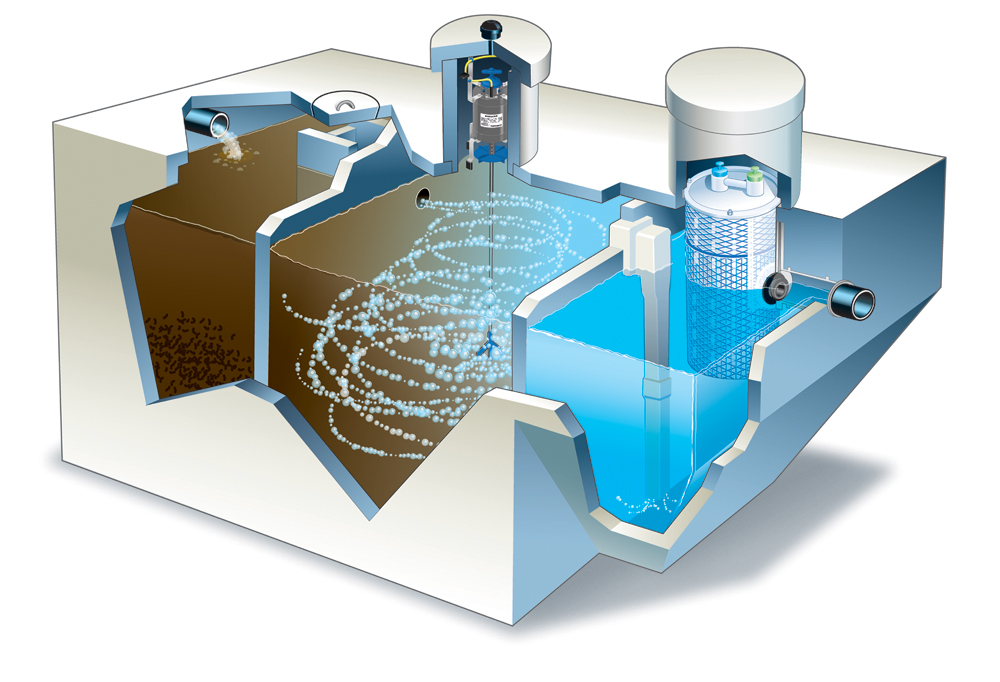Looking elsewhere to restore L.I’s surface waters to health

MOTIVATION ELSEWHERE
On the morning of Aug. 20, 2003, phones began ringing incessantly at the offices of the Rhode Island Department of Environmental Management, with callers reporting a sudden die-off of fish that were floating in patches across Greenwich Bay. More than a million fish, crabs and other sea life were reportedly killed as a result of harmful algal blooms, according to the Rhode Island agency.
Mr. Clapp explained that as the algae died and sank to the bay’s bottom, bacteria began feeding on it, rapidly robbing the water of oxygen and essentially choking the bay’s ecosystem.
“That particular incident got a lot of people’s attention,” said George Loomis, a biologist and the director of the University of Rhode Island’s Onsite Wastewater Training Center, where state officials train workers on installation and maintenance procedures and test new systems for compliance.
Soon after that die-off, the state’s legislative officials began working on an action plan that included a funding source to help homeowners who lived within 200 feet of a water body or a public drinking-water well pay for individual denitrification systems, Mr. Loomis explained.
According to Suffolk County’s summary of the April tour, Rhode Island helps by providing low-interest loans to homeowners, allowing those who are required to have denitrification systems to borrow up to $25,000 to cover the cost of their installation. Mr. Loomis explained that the new mandates actually created jobs and that the state worked with the University of Rhode Island to train employees for those new opportunities.
“With advanced treatment systems, they require more oversight than a conventional system would,” he said. “Each of them needs to be looked at, and you need inspectors to do that.”
He described the ecology of Rhode Island as “remarkably similar” to coastal features across the North Fork.
The county’s tour also included areas along Chesapeake Bay in Maryland, where officials instituted what has affectionately become known as “the flush tax,” Mr. Dale said.
Maryland lawmakers established a Bay Restoration Fund in 2004 and expanded it in 1012 to create a Nitrogen-Reducing Septic Upgrade Program. A $60 annual fee is collected from each homeowner who has a cesspool or septic tanks through either an addition to their property tax or a separate bill, depending on the municipality. Homeowners connected to sewer systems also pay into the Bay Restoration Fund, at various rates, to finance necessary upgrades.
About 60 percent of the upgrade program funding collected is being used to fund denitrification systems, according to state law, with the other 40 percent paying for agriculture conservation — a system Mr. Clapp said could be beneficial to an area like the North Fork.
Mr. Dale called Maryland’s cost-sharing program an equitable option, noting that he believes charging a fee to property owners could be effective here.
To ensure that homeowners who have denitrification systems keep up with maintenance, Mr. Clapp took note of an online data system used by the Barnstable County (Mass.) Department of Health, which tracks the functionality of each individual system. The tracking tools compel county homeowners to not let their system maintenance contracts lapse, lest they face fines of $250 a day. According to Barnstable health officials, the department has yet to assess a fine.
FLUSHING’s FUTURE
Eighty-five percent of Long Islanders support setting new government standards to reduce nitrogen pollution, according to a survey conducted for The Nature Conservancy.
The survey, which involved telephone interviews with more than 600 people during April 2013, was conducted by Fairbank, Maslin, Maullin, Metz & Associates and Public Opinion Strategies and paid for by The Nature Conservancy, an international nonprofit whose mission is to “conserve the lands and waters on which all life depends.”
Of those surveyed, 65 percent said they would be willing to pay an additional $10 a month to fund a plan that would deliver water quality improvements and a majority said they would favor “placing a fee on water bills that would be higher for those that use a lot of water and lower for those that use less.”
While lawmakers work on figuring out a funding source, the Suffolk County health department is now embarking on a number of pilot studies to test four different types of denitrification systems, Mr. Dale said, adding that he is skeptical of the performance capability of available systems.
He explained that conventional on-site cesspools allow at least 40 milligrams per liter of nitrogen to flow into nearby waters, with older and less functional systems emitting as much as 60 milligrams per liter of nitrogen.
“The goal is to reduce output [from one system] to 19 or 20 milligrams — halving the amount,” Mr. Dale said. “I think that is still not the case for some of these [denitrification] systems.”
He said he hopes that a system the county can approve will be available by 2015 and that when it is, a workable financial mechanism to help Suffolk homeowner afford it will also be in place.







